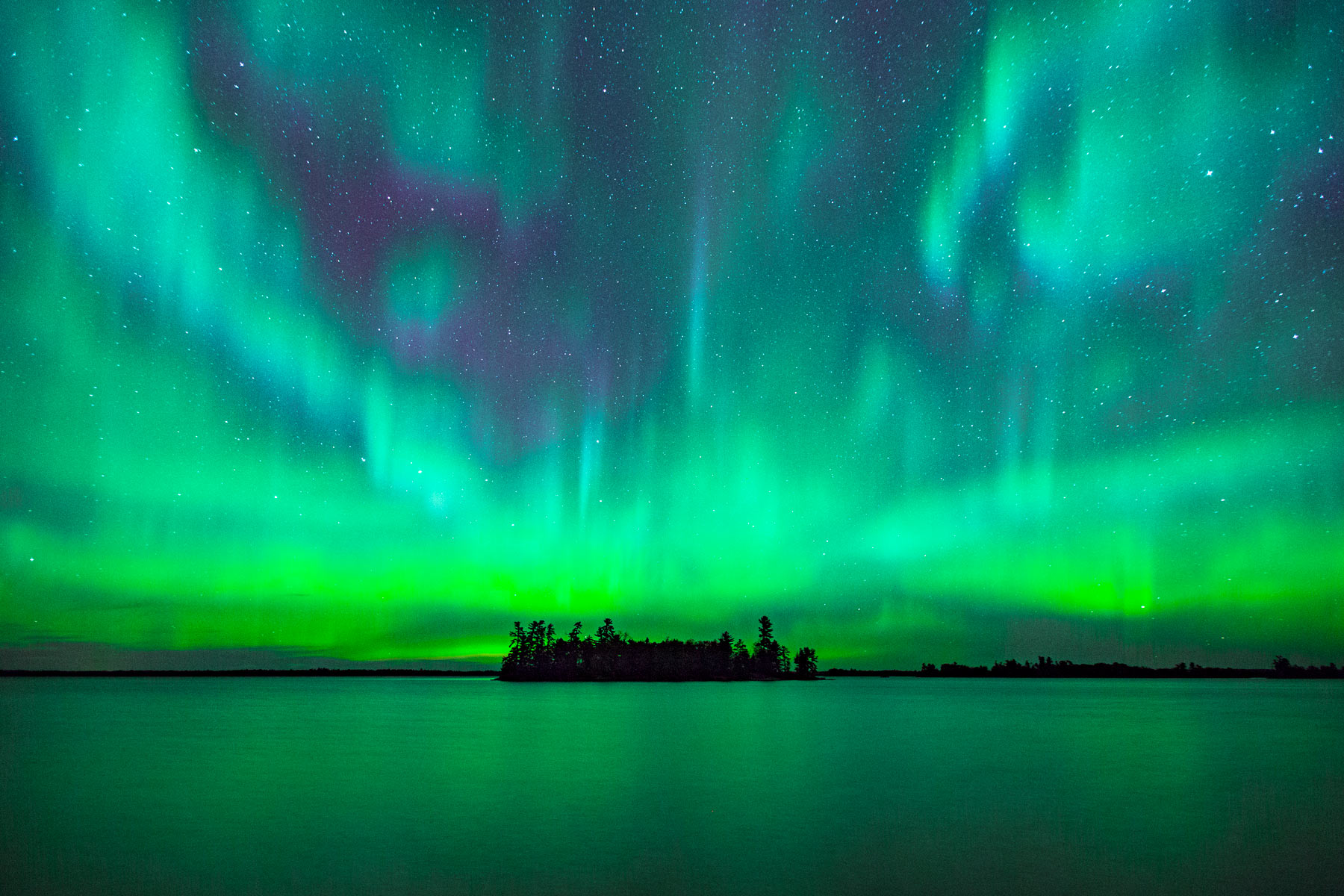
Article Summary: Minnesota National Parks
Minnesota National Parks! We’ve got six incredible national park sites for you to see on your next visit to The Land Of 10,000 Lakes.
Minnesota is home to some world class national parks including one of our absolute favorites and our current most underrated national park, Voyageurs.
We’ve spent a great deal of time in Minnesota’s National Parks and have plenty to say about them. In fact, More Than Just Parks Co-Founder Jim Pattiz even married a Minnesotan who spent much of her early life canoeing and hiking the state’s immense natural beauty.

So, What Is A National Park?
We get asked that question a lot because there’s a difference between a “national park” and a “national park site.” To help you understand that difference you might want to check out our article titled: What Is A National Park Really?
If you’re planning a trip to the Land of 10,000 Lakes then one book that I high recommend is: The Seven States of Minnesota: Driving Tours Through the History, Geology, Culture and Natural Glory of the North Star State by John Toren.
We’re going to give you 6 wonderful reasons why you’ll want to make Minnesota your next vacation destination – not that you should need them!

Table Of Contents: Minnesota National Parks
Minnesota National Parks
1. Grand Portage National Monument
Among the wonderful Minnesota National Parks, one of my favorites is the Grand Portage National Monument and Indian Reservation. This is a National Park Service site in Minnesota which forms a bridge between people, time and culture.
Grand Portage National Monument was established in 1958 to commemorate the rich history of the Grand Portage Ojibwe people and the fur trade that took place in the region.
The monument encompasses a 9.6-mile historic footpath, known as the Grand Portage, that was used by the Ojibwe people and European fur traders as a trade route between Lake Superior and the interior of the continent.
The Grand Portage was a critical trade route in the North American fur trade, connecting the interior of the continent to European markets through the Great Lakes. The route was used by the Ojibwe people and European fur traders for over a century, and played a key role in the development of the region and the establishment of trade networks and relationships between the Ojibwe people and European settlers.
In addition to preserving the historic footpath, Grand Portage National Monument includes a reconstructed fur trade post and several other historic buildings, as well as interpretive exhibits and educational programs that provide visitors with a glimpse into the history of the Grand Portage and the fur trade.
The monument is also home to the Grand Portage National Heritage Center, which offers a wide range of exhibits, programs, and cultural events that celebrate the rich cultural heritage of the Grand Portage Ojibwe people.

Things To Do At The Grand Portage
The monument preserves 710 acres which includes: the historic depot (71 acres) located on Lake Superior, the site of Fort Charlotte (98 acres) on the Pigeon River with the Grand Portage (541 acres) connecting the two depots.

The 8.5 mile portage corridor and Fort Charlotte (639 acres) contain the majority of the Monument’s semi-wilderness setting.
There are some wonderful activities for visitors which include:
- Heritage Center and Historic Depot: It’s a great place to begin your adventure. There you can view exhibits about Anishinaabe (Ojibwe) culture and where you learn about a time when the fur trade dominated North American commerce.
- View One Of The Excellent Films On The Grand Portage Story: There’s a feature film (23 minutes) titled “Rendezvous With History A Grand Portage Story,” as well as shorter films which include: “Our Home: The Grand Portage Ojibwe,” “The Gift of the Birch Bark Canoe,” “A Gap in the Hills: Geography of Grand Portage,” and “The Men of the North West Company” – Running time for all four is 24 minutes.
- Visit The America’s National Parks Bookstore.
- Visit The Historic Depot: It includes three reconstructed post and sill log buildings and four outside areas.
- Hike The Mount Rose Loop Trail: Visitors will be treated to a stunning overlook of the historic depot, Grand Portage Bay, Mount Josephine, and the gap in the hills where the Grand Portage footpath goes.
Minnesota National Parks includes all of this and so much more.

2. Mississippi National River & Recreation Area
The Mississippi National River & Recreation Area is a 72-mile long park along the Mississippi River in Minnesota. Established in 1988, the park is dedicated to preserving and interpreting the cultural and natural resources of the Mississippi River and the surrounding region.
The park encompasses a wide range of resources, including historic sites, parks, recreational areas, and important wildlife habitats. Visitors to the park can enjoy hiking and biking trails, boating and fishing opportunities, and educational programs that highlight the rich cultural and natural history of the Mississippi River and its role in American history.
In addition to recreational opportunities, the Mississippi National River & Recreation Area is also dedicated to preserving the cultural and natural resources of the Mississippi River and its surrounding region.
The park protects important wildlife habitats, historic sites, and cultural landmarks, and offers a range of educational programs and exhibits that highlight the rich cultural and natural heritage of the region.
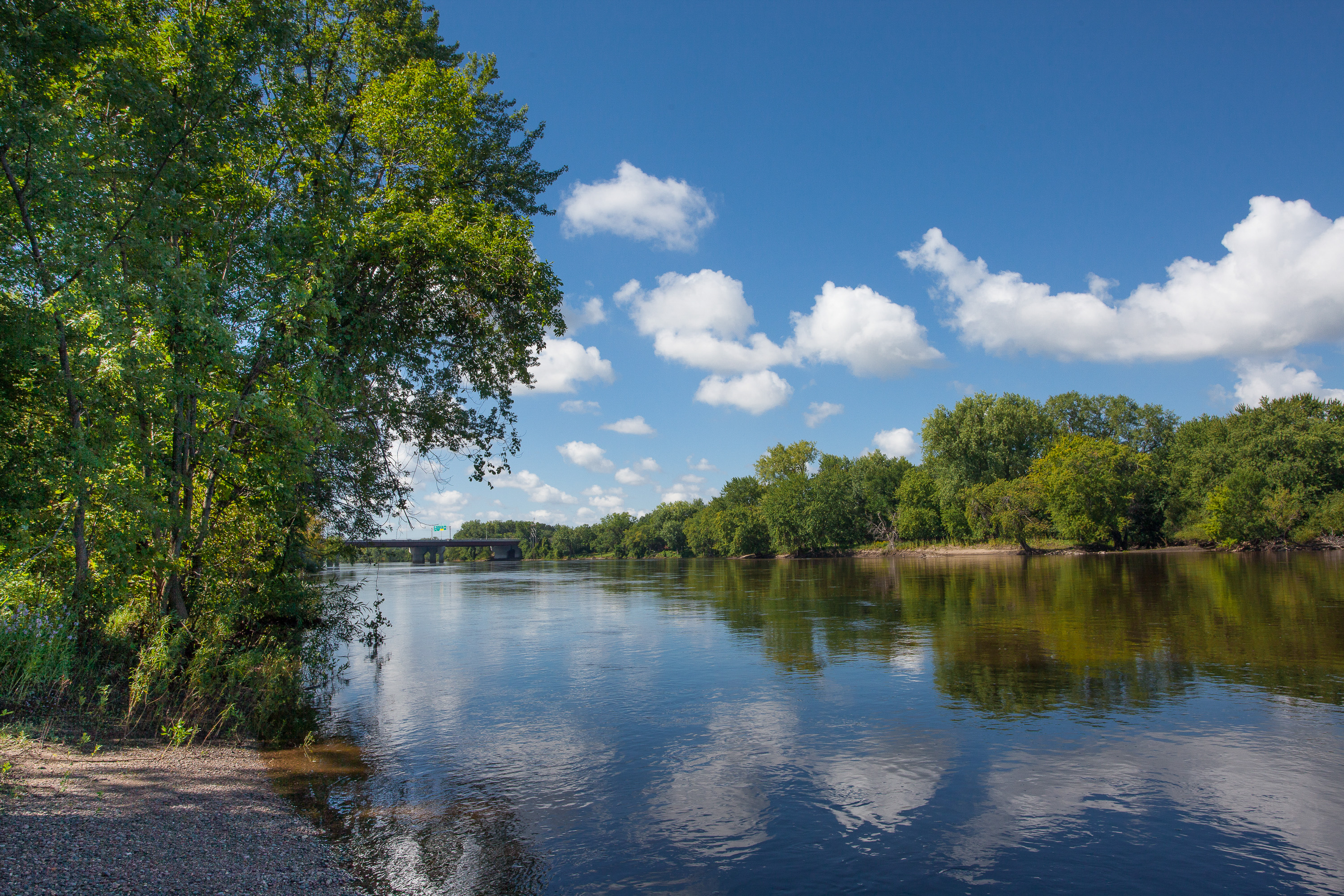
Things To Do
This 72 mile river park offers quiet stretches for fishing, boating and canoeing, birdwatching, bicycling, and hiking.
And there are plenty of visitor centers and trails that highlight the fascinating human history of the Mississippi River. This a great place to start your exploration of this important river.
I recommend beginning your visit at The Mississippi River Visitor Center. The center provides fun activities for people of all ages as well as highlighting the fascinating human history of the Mississippi River.
I also recommend exploring the Upper St. Anthony Falls Lock and Dam. This central, historic landmark provides panoramic views of the Upper St. Anthony Lock and Dam, St. Anthony Falls, and the surrounding mill district.
If you love a good hike then Coldwater Spring is a great place for you. There are many for wildlife viewing and photography. The breathtaking trails there surround a restored prairie oak savannah and wetlands.
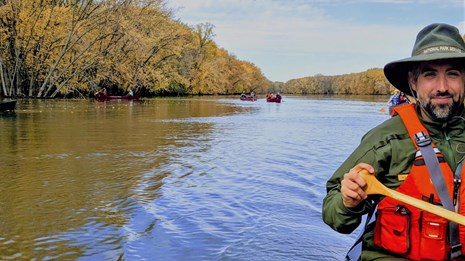
More Minnesota National Parks
3. North Country National Scenic Trail
Minnesota National Parks also includes one of the most beautiful scenic trails in America.
The North Country National Scenic Trail provides visitors opportunities from bird watching to backpacking. This is another great Minnesota National Park!
The trail traverses eight northern states and connects a host of natural, historic and cultural sites. You can see everything from small towns to larger cities, valleys to hilltops and much more.

The History Of The North Country National Scenic Trail
The North Country National Scenic Trail is a 4,600-mile long footpath that runs from New York to North Dakota. Established in 1980, the trail is part of the National Scenic Trail system and is dedicated to preserving and interpreting the natural and cultural resources of the northern United States.
The trail traverses through some of the most stunning and remote wilderness areas in the country, including national forests, state parks, and wildlife refuges. It passes through a wide range of ecosystems, including forests, prairies, wetlands, and mountains, and offers visitors a unique opportunity to experience the diverse landscapes of the northern United States.
In addition to providing opportunities for recreation, the North Country National Scenic Trail is also dedicated to preserving the natural and cultural resources of the region. The trail passes through several important wildlife habitats, historic sites, and cultural landmarks, and offers a range of educational programs and exhibits that highlight the rich natural and cultural heritage of the region.
Today, the North Country National Scenic Trail is a place of recreation, education, and reflection, and serves as a powerful reminder of the rich natural and cultural heritage of the northern United States.
Hiking and backpacking on the trail are popular activities, and the trail is used by thousands of people each year to explore the beauty and diversity of the northern United States.
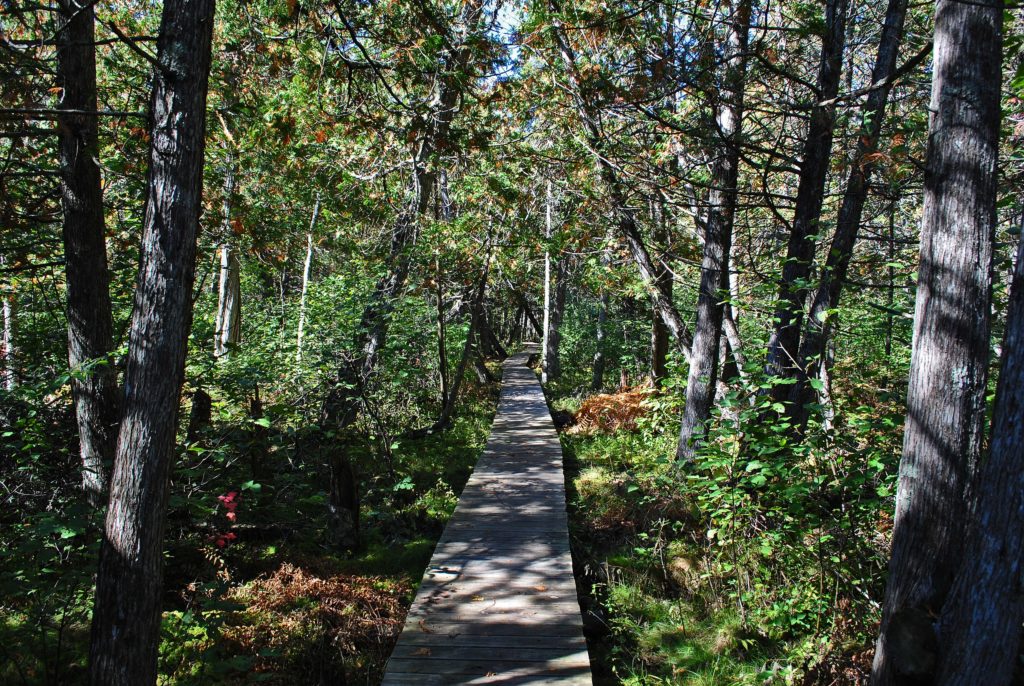
The North Country Scenic Trail In Minnesota
There is a 196-mile, contiguous segment located in north-central Minnesota between Detroit Lakes and Remer and a 400-mile, contiguous segment from near Ely to Jay Cooke State Park south of Duluth.
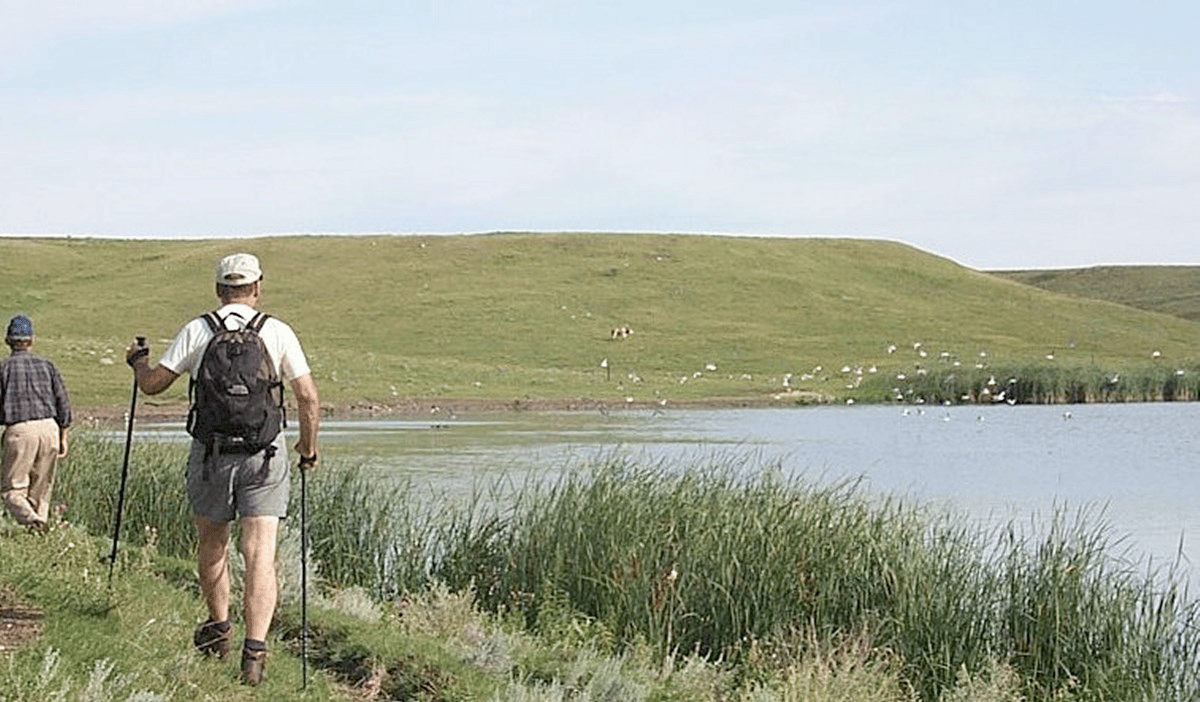
4. Pipestone National Monument
No trip to Minnesota National Parks would be complete without a visit to Pipestone National Monument.
The Pipestone National Monument is located in southwestern Minnesota and is a unique and important cultural site that has been used by Native Americans for thousands of years to obtain the red stone used to make pipes for spiritual and cultural purposes.
The red stone, also known as pipestone, is found in a quarry within the monument and has been valued for its spiritual significance and its workability as a material for making pipes.
The history of the Pipestone National Monument is closely tied to the spiritual and cultural practices of the Plains Indian tribes, who have used the pipestone quarries for generations. The quarries have been a source of both peace and conflict, as different tribes have come together to work and trade at the site, and disputes have arisen over access to the pipestone.
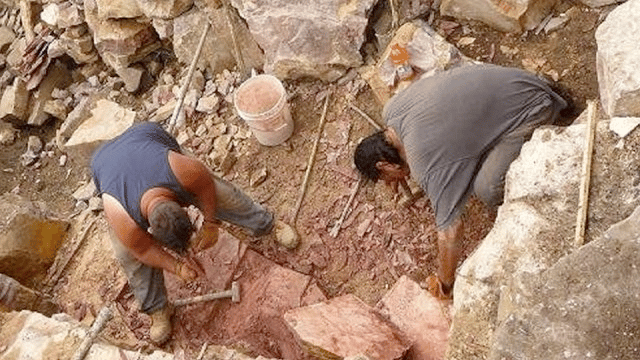
See Pipestone Today
In the late 19th century, the quarries were threatened by commercial development and the arrival of settlers, and in 1937 the site was designated a National Monument to protect it and preserve its cultural significance.
Today, the Pipestone National Monument is managed by the National Park Service and offers visitors the opportunity to learn about the history and culture of the Plains Indians, as well as the natural beauty of the area.
The park features interpretive trails, a museum, and demonstrations of traditional pipe-making techniques, and it remains a significant and sacred place for Native Americans and others who appreciate its cultural and spiritual significance.
In addition to preserving the pipestone quarries, Pipestone National Monument also includes several historic buildings, interpretive exhibits, and educational programs that provide visitors with a glimpse into the history and cultural significance of the pipestone quarries.
The monument is also home to a museum and a visitor center, which offer a wide range of exhibits, programs, and cultural events that celebrate the rich cultural heritage of the region.
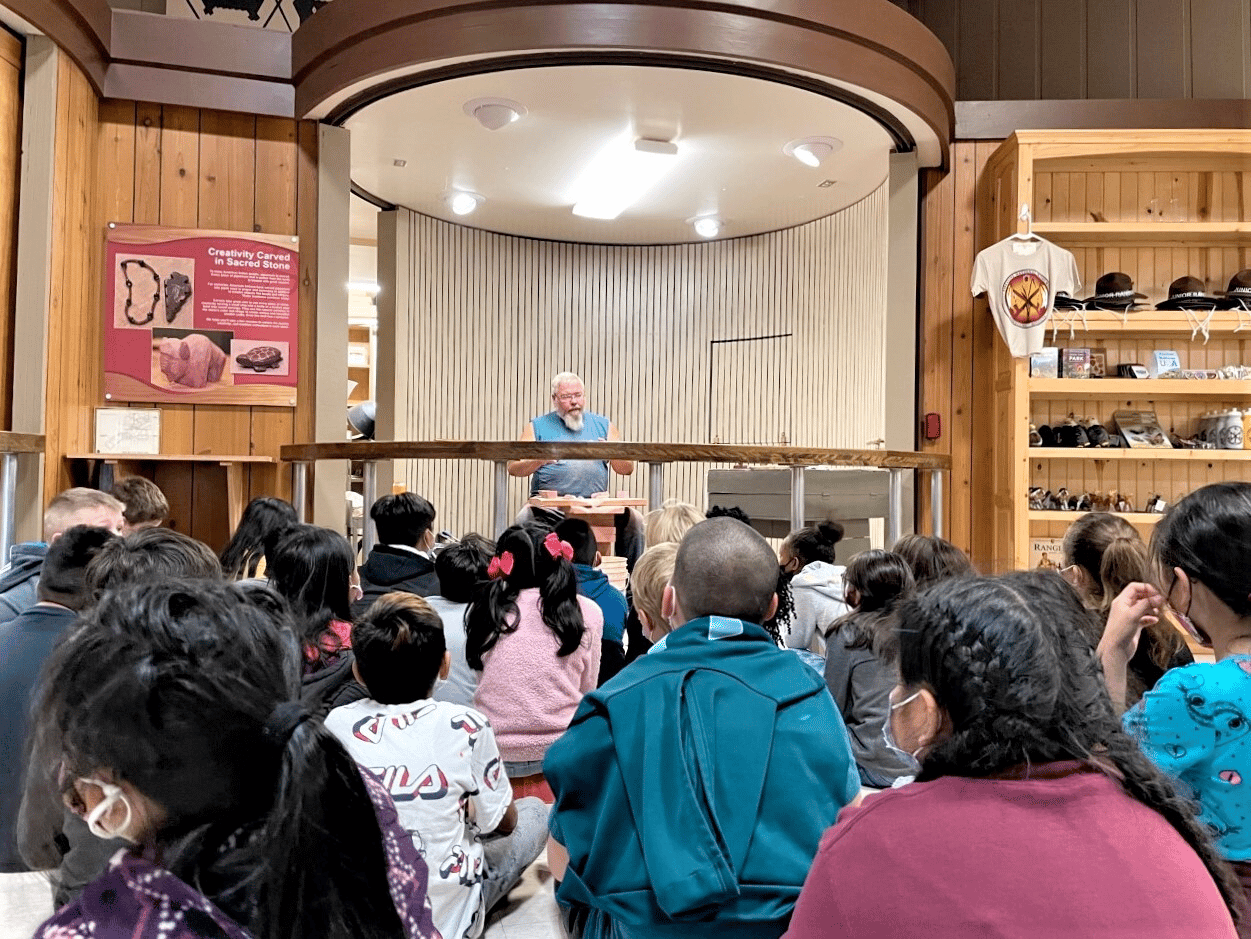
More Minnesota National Parks
5. Saint Croix National Scenic Riverway
The Saint Croix National Scenic Riverway is a 250-mile long park along the Saint Croix River in Wisconsin and Minnesota. Established in 1968, the park is dedicated to preserving and interpreting the natural and cultural resources of the Saint Croix River and its surrounding region.
The park encompasses a wide range of resources, including scenic vistas, recreational areas, and important wildlife habitats. Visitors to the park can enjoy boating, fishing, camping, and hiking opportunities, and educational programs that highlight the rich cultural and natural history of the Saint Croix River and its surrounding region.
In addition to recreational opportunities, the Saint Croix National Scenic Riverway is also dedicated to preserving the natural and cultural resources of the Saint Croix River and its surrounding region.
The park protects important wildlife habitats, historic sites, and cultural landmarks, and offers a range of educational programs and exhibits that highlight the rich natural and cultural heritage of the region.
Today, the Saint Croix National Scenic Riverway is a place of recreation, education, and reflection, and serves as a powerful reminder of the rich cultural and natural heritage of the Saint Croix River and its surrounding region. The park is a popular destination for outdoor enthusiasts and is enjoyed by thousands of visitors each year.
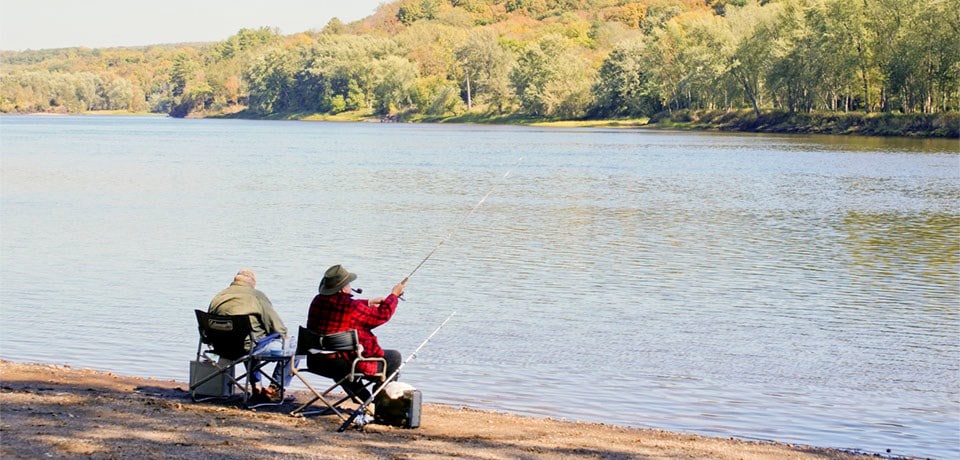
Hiking Trails Along The Saint Croix
There are seven hiking trails which are open year round. Trail surfaces are uneven and may be steep so be sure to watch your step. And also make sure to check for ticks.
Ridge View Trail is a three mile trek with two loops. The Chisage Loop traverses basalt rock outcroppings; the Osceola Loop is more level as you hike through pine and woods. Vistas of St. Croix River backwaters are visible from the bluff side of the trail.
This trail is a great place to see scarlet tanagers, bald eagles, turkey, grouse, and other forest-loving wildlife. Forest plants include marsh marigolds and large maple trees.
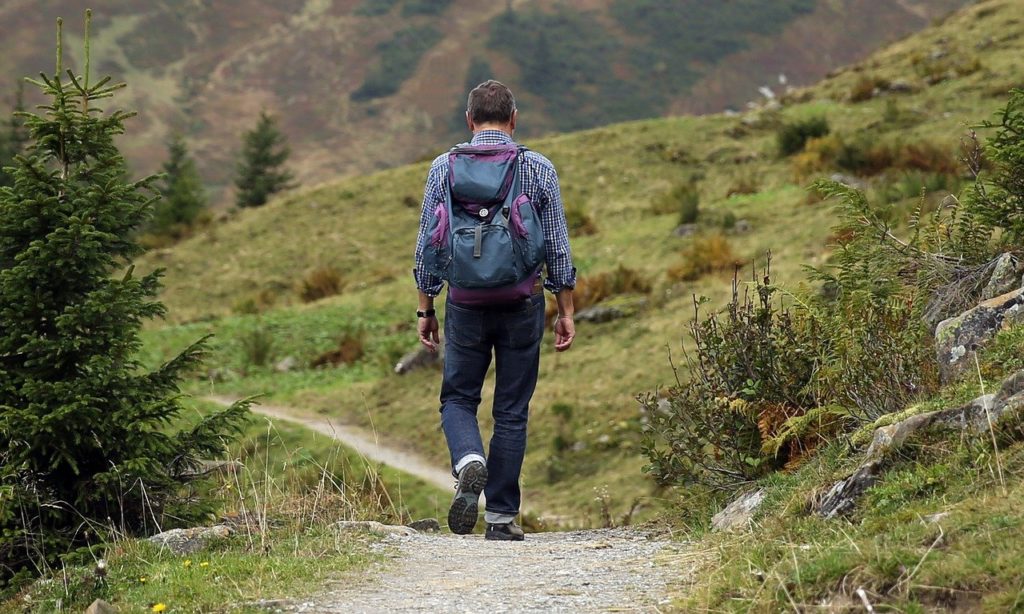
Trego Lake & Trego Nature Trails
The Trego Lake Trail is 3.6 miles and 3 loops. It offers hikers many scenic overlooks of Trego Lake. The area has a large population of white-tailed deer and ruffed grouse. Watch the ground for signs left by these animals.
The Trego Nature Trail is 2.8 miles. Hikers will see a beautiful forest and breathtaking views of the Namekagon River. Wildlife seen can include deer, fox, otters, wolves, and bobcat.

Indian Head Flowage & Sandrock Cliffs Trails
The Indian Head Flowage Trail is a three quarter mile trek. This trail crosses bridged streams as it winds its ways through woods and wetlands to the river.
Hikers will be treated to wildflowers which include marsh marigolds, trilliums, blue flag iris, wild geraniums, and more.
Sandrock Cliffs Trail is five miles and four loops. The lower loop of this trail follows the river closely, then turns onto a ridge providing a variety of terrain and scenery.
The highlight of this trail system is the sandstone cliffs located in a side channel of the river.

6. Voyageurs National Park
No visit to Minnesota National Parks is complete without a trip to Voyageurs National Park.
From kaleidoscopic sunrises and sunsets mirrored on glassy waters of its lakes to some of the most spectacular displays of the northern lights you’ll find anywhere on earth, Voyageurs is a true monument to the wonders of nature.
If you’re wondering how challenging it is to visit Voyageurs given that it’s almost exclusively accessible by boat – don’t!
The area has countless lodges and outfitters that will rent you any kind of boat you could want from a canoe on up to a houseboat at very reasonable prices.
The park is extensively mapped and easy to navigate once out on the waters. Trust me, you won’t want to miss out on an unforgettable experience because you’re unfamiliar with boating.
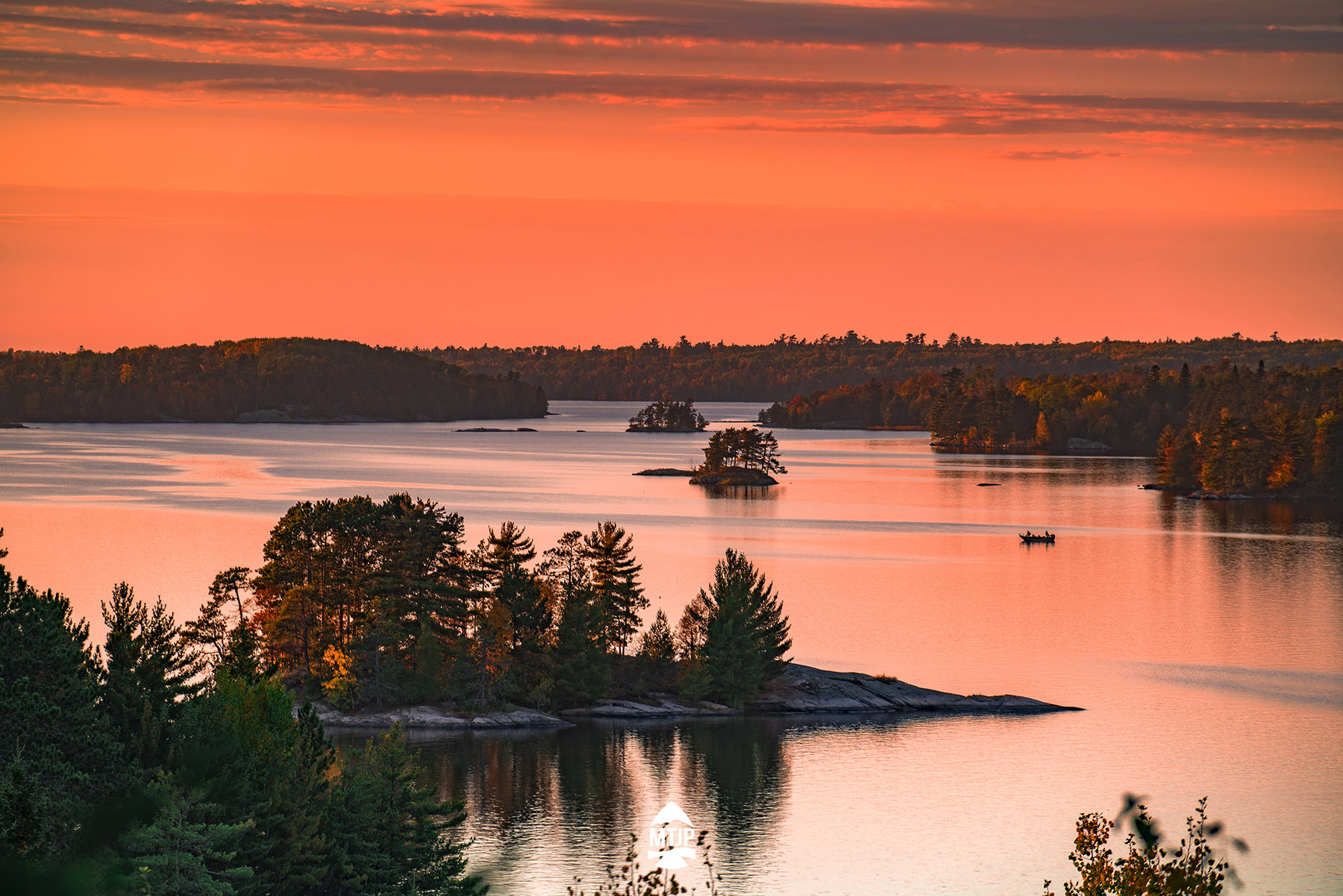
Check out our complete article on the 10 Best Things to Do in Voyageurs National Park
The History of Voyageurs National Park
You cannot talk about the history of Voyageurs National Park without two names coming up, Sigurd Olson and Walter Mondale. One was a renowned naturalist and writer and the other a United States Senator.
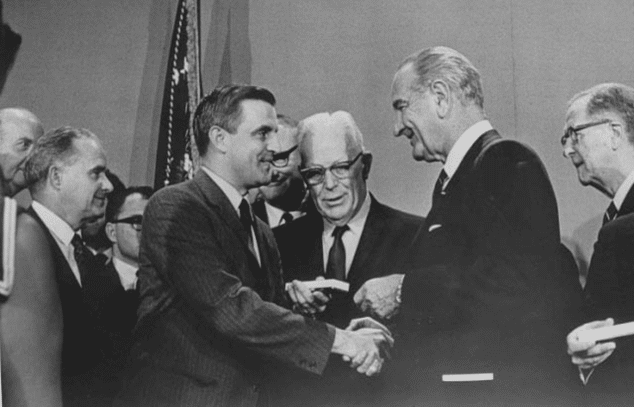
The History of Voyageurs National Park
Voyageurs National Park has a rich history of human habitation and culture. The area has long been home to the Ojibwe people who made their lives in this harsh, yet bountiful environment. Native Americans called this place home for thousands of years, fishing, hunting, and traveling the lakes in birch bark canoes.
The first Europeans to arrive were early trappers and fur traders known as Voyageurs. These Voyageurs were French Canadians who transported furs using canoes. It was these early frontiersmen for whom the park was named.
Later the park experienced a brief gold rush and a logging boom before finally becoming the recreation paradise it is today. You can read more about the park’s history on their website here.
Save The Boundary Waters
Right now Voyageurs National Park and the Boundary Waters face the threat of permanent despoilment from mining interests looking to exploit the area for metals located beneath the lakes and rivers, namely the Twin Metals Mine.
You can do your part to help save this precious wild area by visiting or donating to Save The Boundary Waters here.
Sigurd Olson & Voyageurs
Sigurd Olson is the man that put into words what makes this corner of the world so special and has served as an inspiration for many later environmentalists.
Olson attended Northland College for two years. He spent a great deal of his time fishing, hunting and enjoying nature.
Olson finished his studies at the University of Wisconsin-Madison, graduating in 1920 with a bachelor’s degree in agriculture. Later, at the University of Illinois he would earn a master’s degree in animal ecology in 1932.
He taught biology at what was then Ely Junior College in Ely, Minnesota, and ran an outfitting business serving the Boundary Waters, a region he grew to love for its unspoiled wilderness. Olson was named dean of that community college in 1936, a post he left in 1947 to devote himself full time to writing.
In 1956, when Olson was 57, his first book, The Singing Wilderness, was published and became a New York Times bestseller.
Over the next 30 years, he went on to write numerous magazine articles and eight more books, including Listening Point, The Hidden Forest, and Reflections of the North Country.
In 1974, he was presented with the highest honor in nature writing – the John Burroughs Medal from the John Burroughs Association. (Source: Lake Superior Magazine)

A Conservationist
Sigurd Olson was also one of the most influential conservationists of the 20th century. As a nature writer, he is best known as the author of and eight other books about the North Woods wilderness of northern Minnesota.
Olson played an important role in the preservation of a number of national parks, seashores, and wilderness areas.
He served as a volunteer leader in several environmental groups, including President of The Wilderness Society, President of the National Parks Association, and Wilderness Ecologist for the Izaak Walton League.
Olson helped draft the Wilderness Act of 1964 and identify lands later protected under the Alaska National Interest Lands Conservation Act, which set aside 104 million acres as national parks, wildlife refuges and forests.
He was instrumental in the establishment of Voyageurs National Park, which he named.
Olson’s proudest moment may have come in 1978, when President Jimmy Carter signed a law granting full wilderness protection to Minnesota’s Boundary Waters Canoe Area. (Source: Sierra Club)
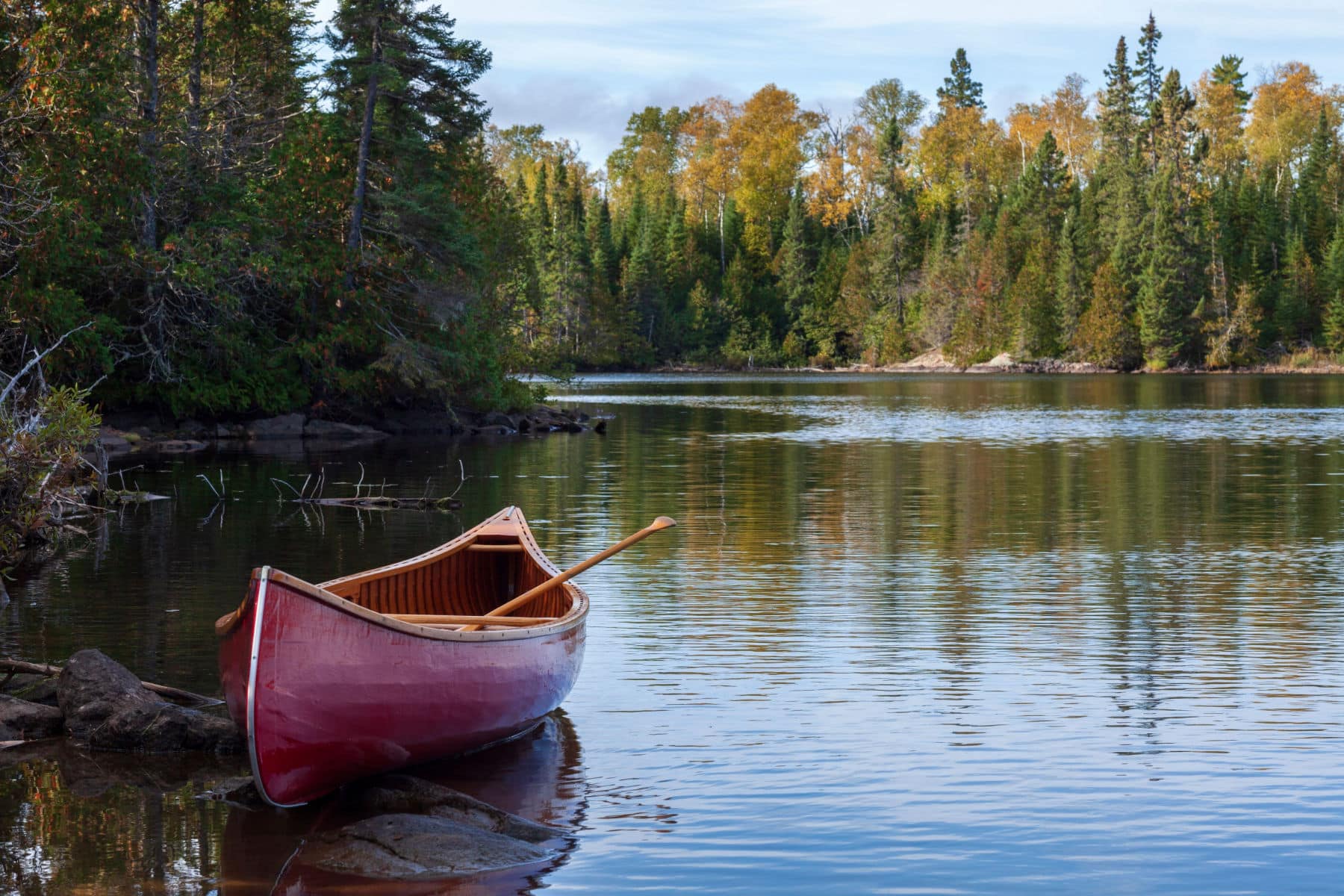
Best Things to Do in Voyageurs National Park
1. Paddle in a Canoe
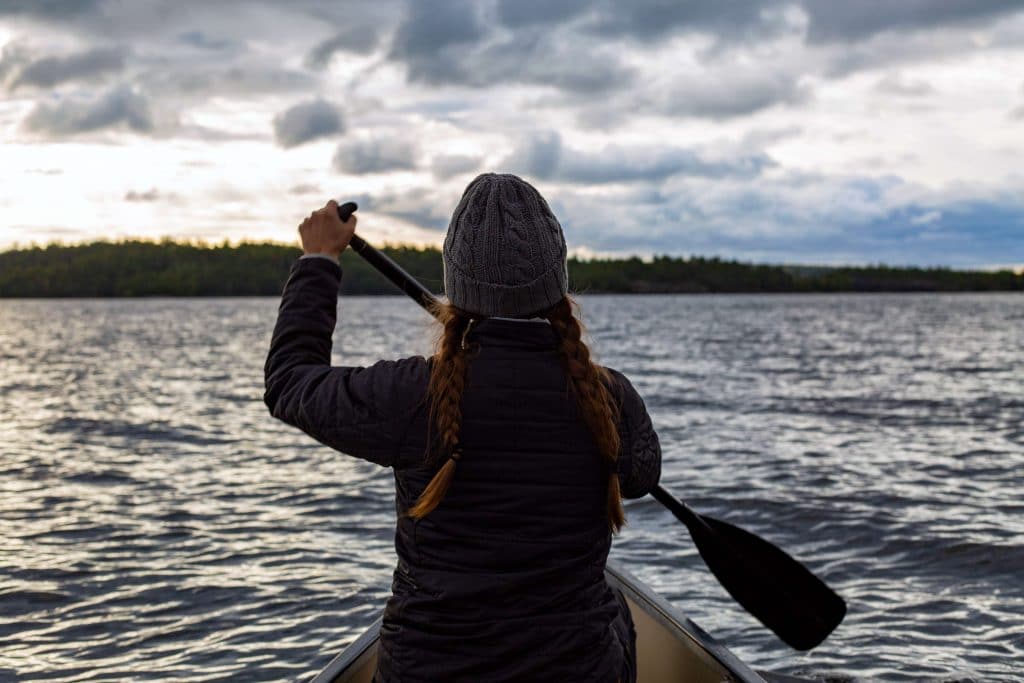
“There is magic in the feel of a paddle and the movement of a canoe, a magic compounded of distance, adventure, solitude, and peace.”
-Sigurd Olson
The best and only way to experience Voyageurs is by boat, but for a truly authentic experience try your hand at canoeing for a day, or if you’re experienced, plan a multi-day trip.
Canoes are the historic mode of transportation in this area and slowly plying the waters of the park’s lakes in a canoe can help give you a fuller appreciation of this unique north woods environment.
2. See the Northern Lights
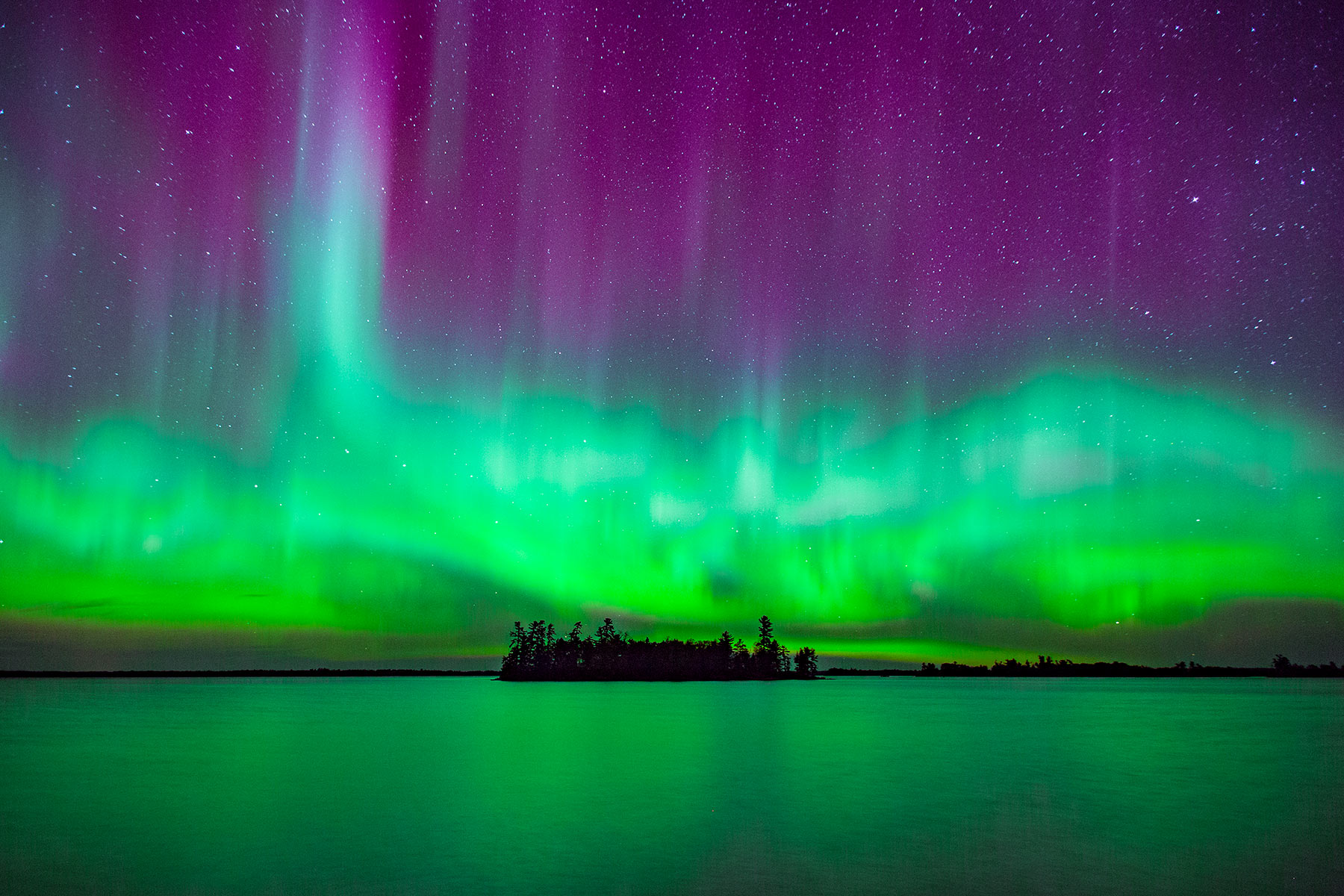
On clear nights in Voyageurs you can see one of the most spectacular light shows in the world, the northern lights. They start as a faint glow on the horizon before working their way up the sky, dancing in real time right before your eyes.
Here in the remote north woods there is almost no light pollution whatsoever and the night sky is truly a wonder to behold.
There’s no need to go to Iceland or Norway or even Alaska if it’s the northern lights you seek, you’ll find them here in all of their glory.
Fall and winter give you your best chances of seeing the northern lights, but you may be lucky enough any time of year if the conditions are right.
3. Explore Ellsworth Rock Gardens

This incredibly unique garden features countless works of art made entirely out of stone. Some of the stones are massive monoliths balanced delicately upon other stones.
This incredible attraction is entirely the work of one man, a humble carpenter from Chicago named Jack Ellsworth, who built these amazing works of art over the course of 20 years starting in the 1940’s.
Tie off your boat here along the shores of Lake Kabetogama and explore the fascinating artistic expressions of one determined man.
4. Go Fishing
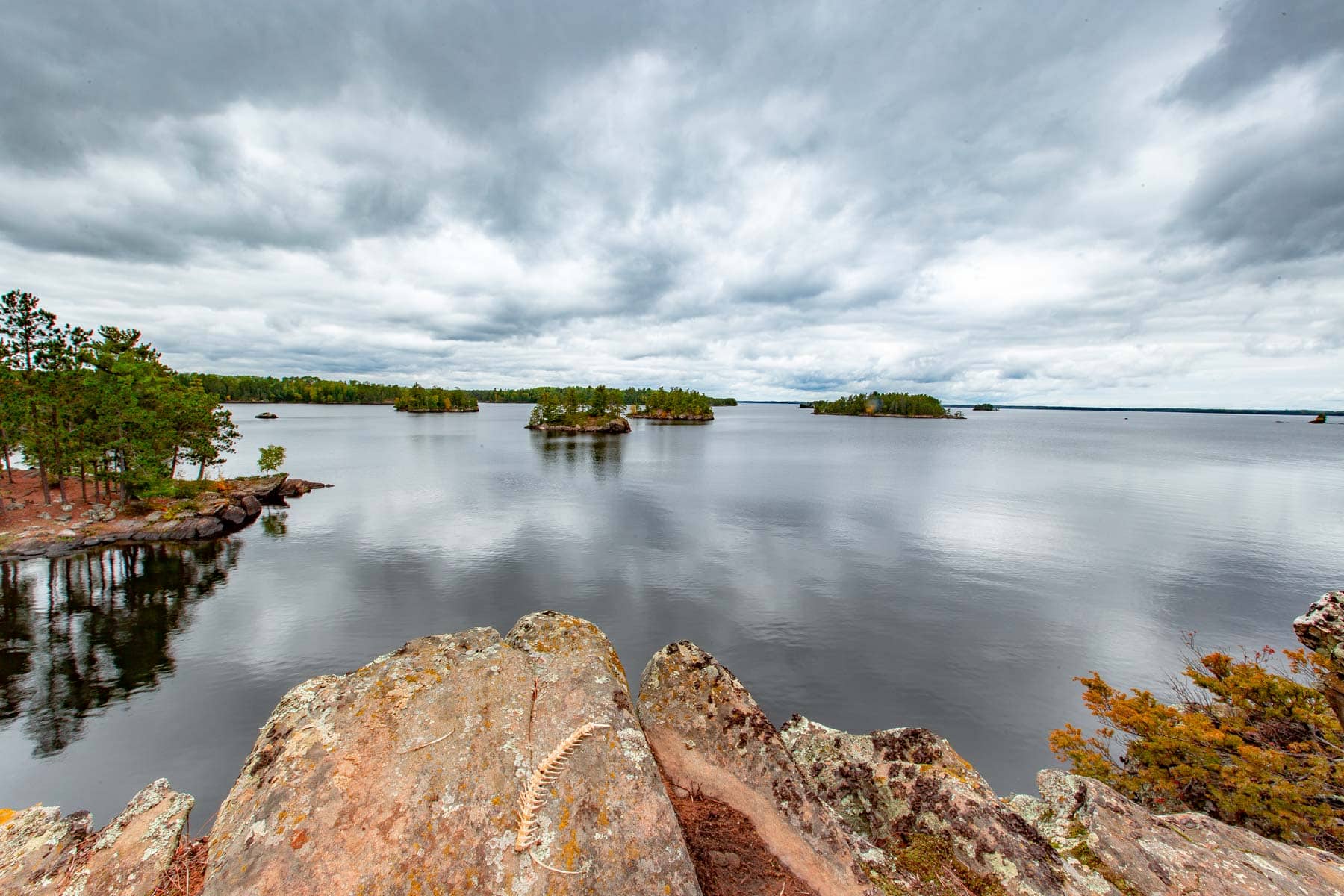
The waters of Voyageurs National Park and the surrounding areas are teeming with native fish that are great for eating or just for sport.
There’s nothing quite like the feeling of catching your own meal and cooking it over an open fire on an island all to yourself.
Be sure to follow NPS and Minnesota DNR rules governing fishing in the area and fish responsibly.
5. Camp on Your Own Island

In Voyageurs there are no campgrounds with sites plotted next to each other one after the other with whirring RV generators, yelling kids, and barking dogs.
In this one-of-a-kind national park every campsite is all to itself, and yes, some are even on their own entire island. Did I mention there are over 150 campsites?
See our full article on Camping in Voyageurs National Park.
Watch Our Award-Winning Voyageurs National Park Video
Synopsis
This film is the culmination of several weeks spent in the northernmost region of Minnesota known as Voyageurs National Park. Encompassing more than 340 square miles, Voyageurs is a watery wonderland almost exclusively accessible by boat.
Journey with us as we explore a land blanketed in pristine lakes, erupting with kaleidoscopic fall colors, and home to the most spectacular displays of the northern lights on the planet.
This is Voyageurs. Filmed primarily in stunning UHD 8K.
This film was made possible by the wonderful people at the Voyageurs National Park Association who work so hard to maintain the park for folks like us. Please check them out (and feel free to donate!): voyageurs.org
Minnesota National Parks FAQ
The state is known as the Land of 10,000 lakes, which is the highest number of any state in the United States. Minnesota is also famous for being the home of Mall of America, the largest shopping mall in the United States; and its outdoor activities, including hiking, camping, fishing, and winter activities.
The following is a list of must-see historic sites in Minnesota:
Voyageurs National Park
Grand Portage National Monument
Fort Snelling
Sinclair Lewis Boyhood Home
Grand Mound Historic Site
Mississippi National River & Recreation Area
North Country National Scenic Trail
Pipestone National Monument
Saint Croix National Scenic Riverway
Split Rock Lighthouse
F. Scott Fitzgerald House
Mountain Iron Mine
Charles A. Lindbergh House
Rabideau CCC Camp
James J. Hill House
Why Trust Us About National Parks In Minnesota?
We’re Jim Pattiz and Will Pattiz, collectively known as the Pattiz Brothers (and sometimes the Parks Brothers) and we absolutely LOVE the national parks.
You should probably know that we don’t just make this stuff up out of thin air. We’ve spent our entire adult lives exploring and filming America’s national parks and public lands.
We’ve worked with the National Park Service, the Department of Interior, USDA, and the U.S. Forest Service for years creating films on important places and issues. Our work has been featured in leading publications all over the world and even some people outside of our immediate family call us experts on the national parks.
Meet The Parks Brothers
Map Of Minnesota National Parks
List Of Minnesota National Parks
- Grand Portage National Monument
- Mississippi National River & Recreation Area
- North Country National Scenic Trail
- Pipestone National Monument
- Saint Croix National Scenic Riverway
- Voyageurs National Park
We Hope You’ll Follow Our Journey

Our goal here at More Than Just Parks is to share the beauty of America’s national parks and public lands through stunning short films in an effort to get Americans and the world to see the true value in land conservation.
We hope you’ll follow our journey through the parks and help us to keep them the incredible places that they are. If you’re interested in joining the adventure then please sign up below!
Helpful Articles
Voyageurs Camping: Voyageurs National Park Camping (Everything You Need to Know)
Things to Do: 10 (INCREDIBLE) Things to Do in Voyageurs National Park
Voyageurs Guide: Voyageurs National Park: Epic Guide to Minnesota’s Watery Wonderland
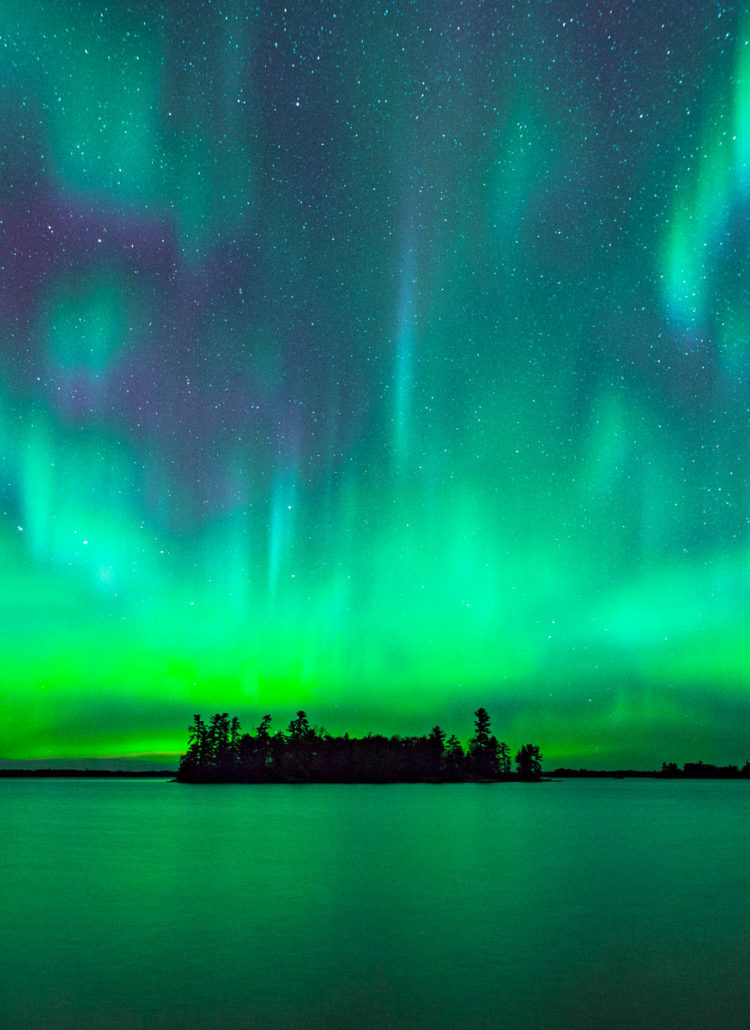
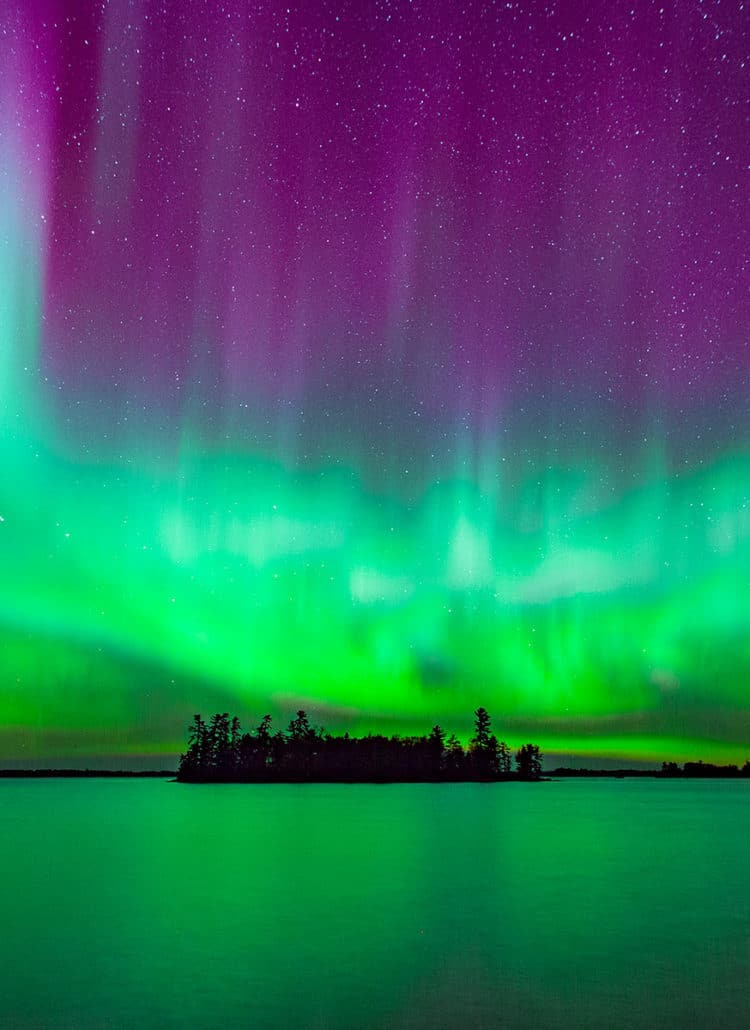



Leave a Reply